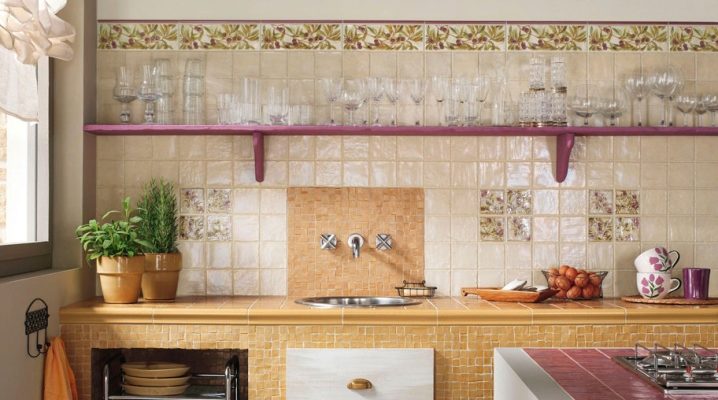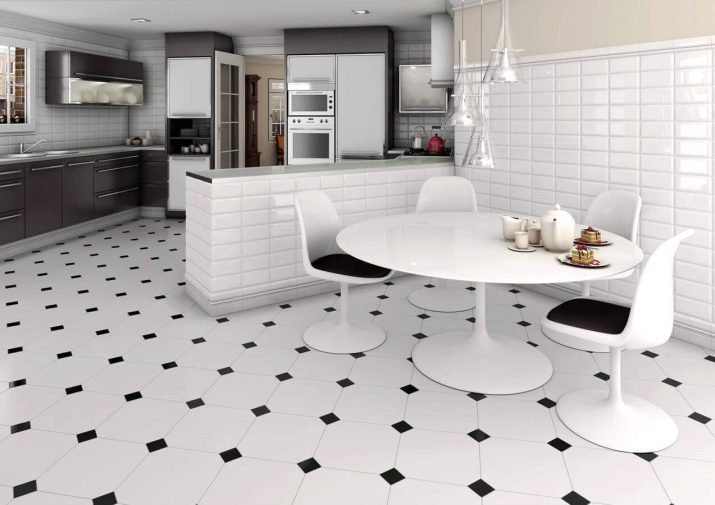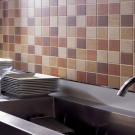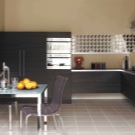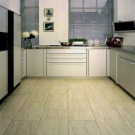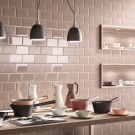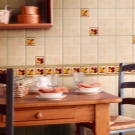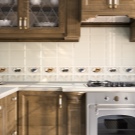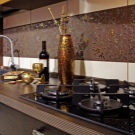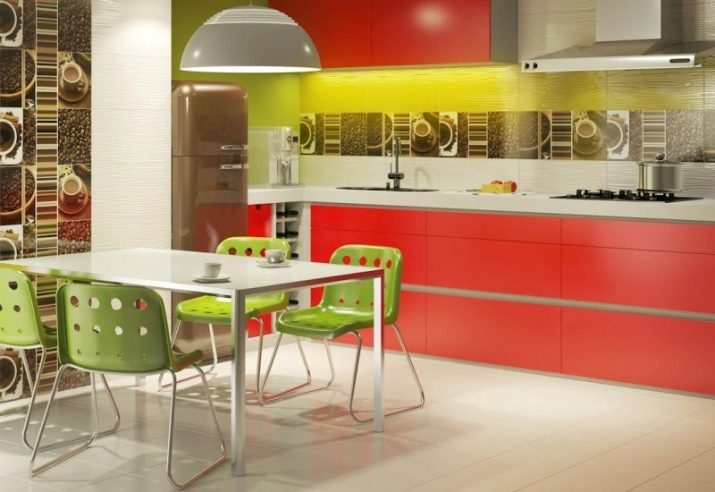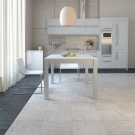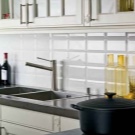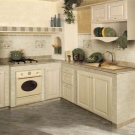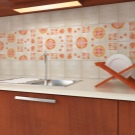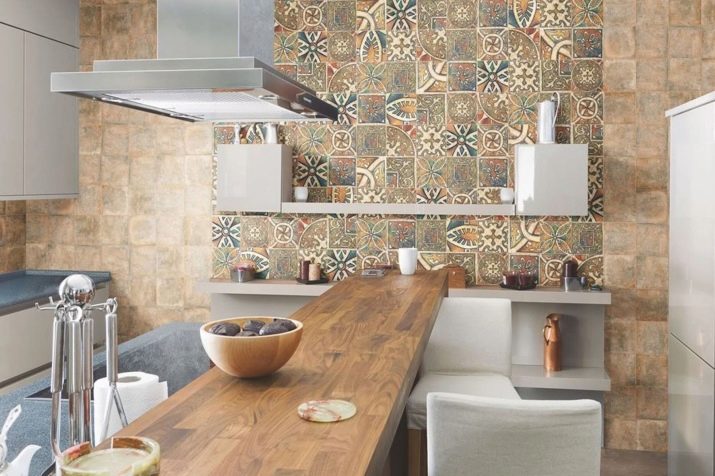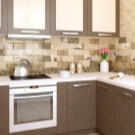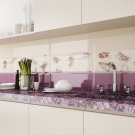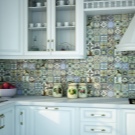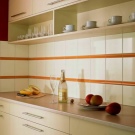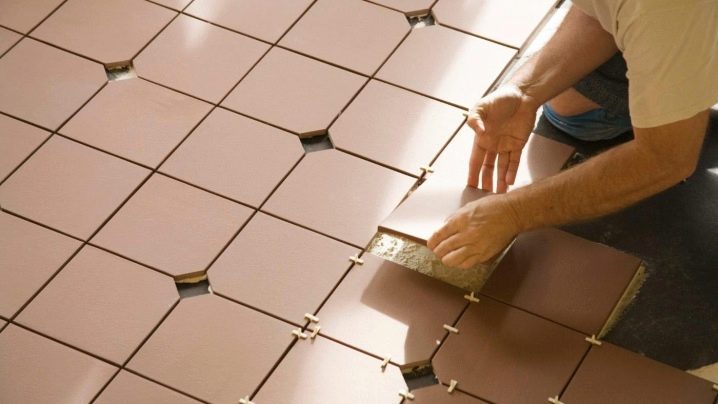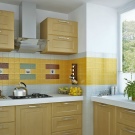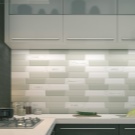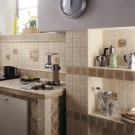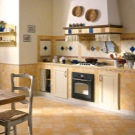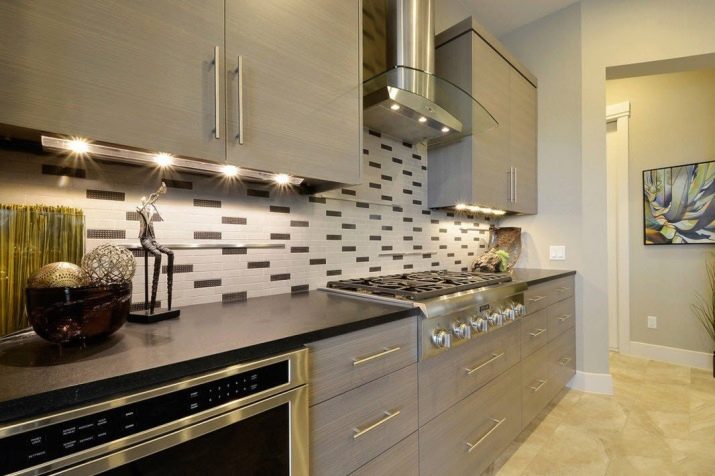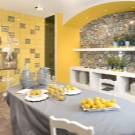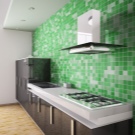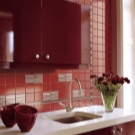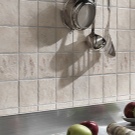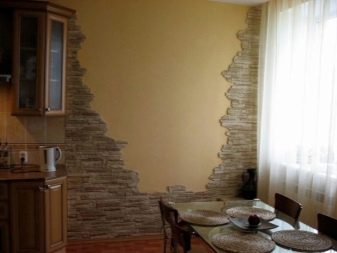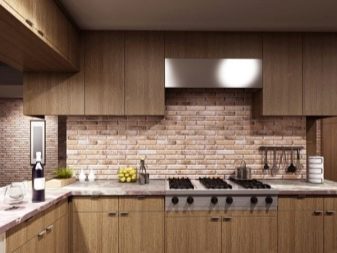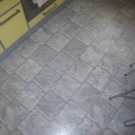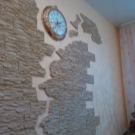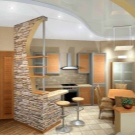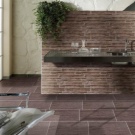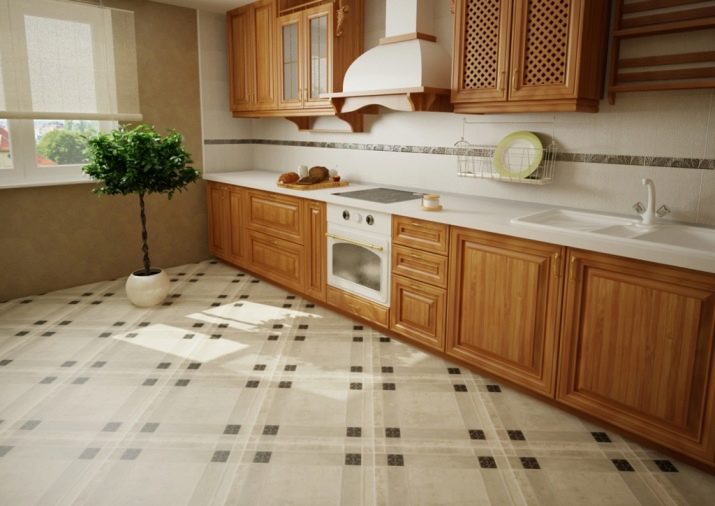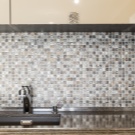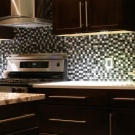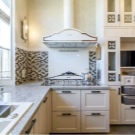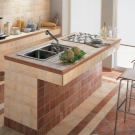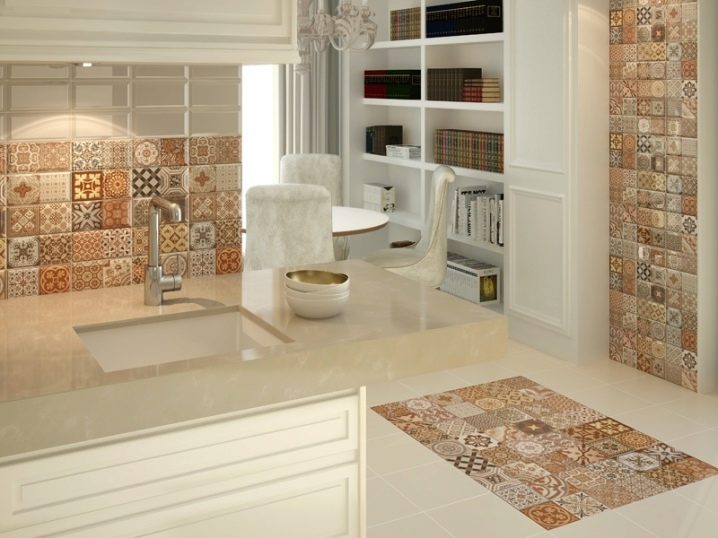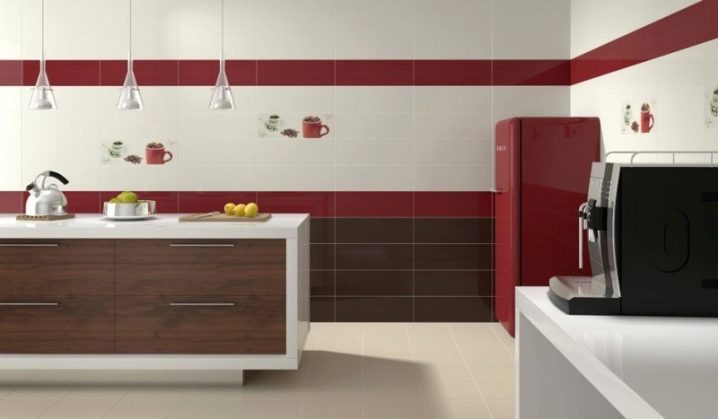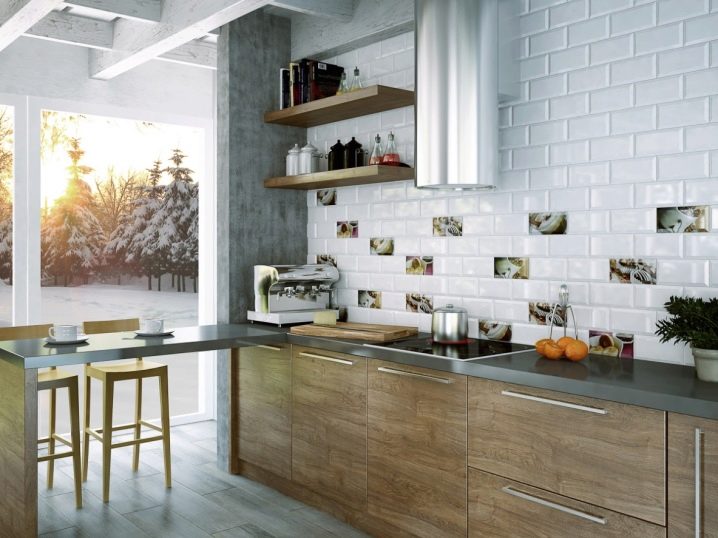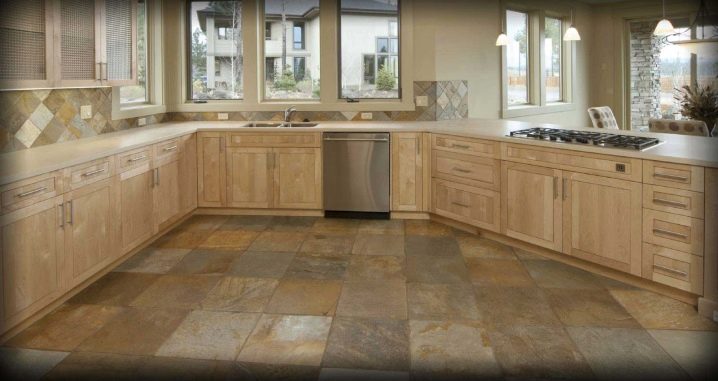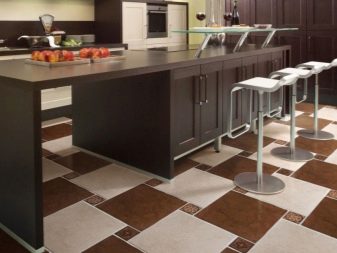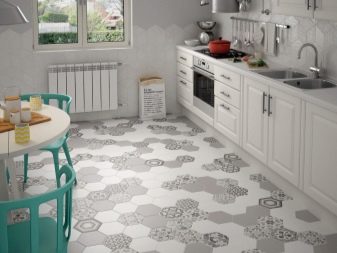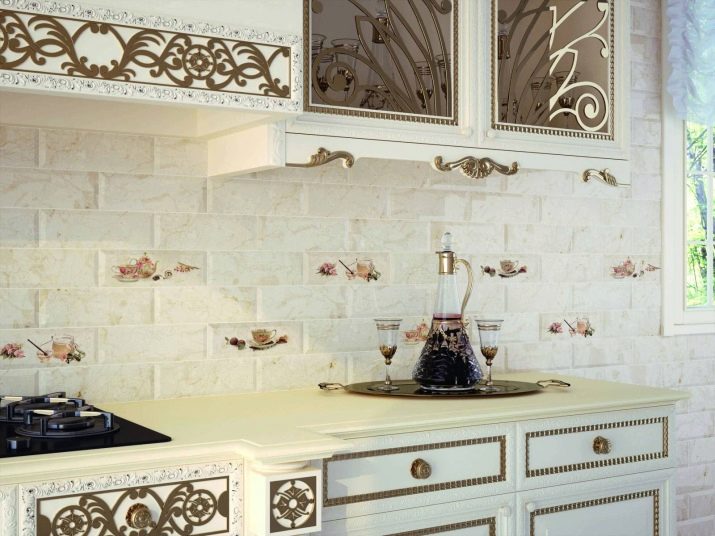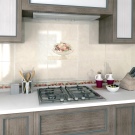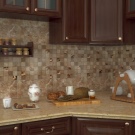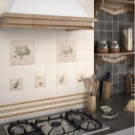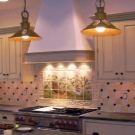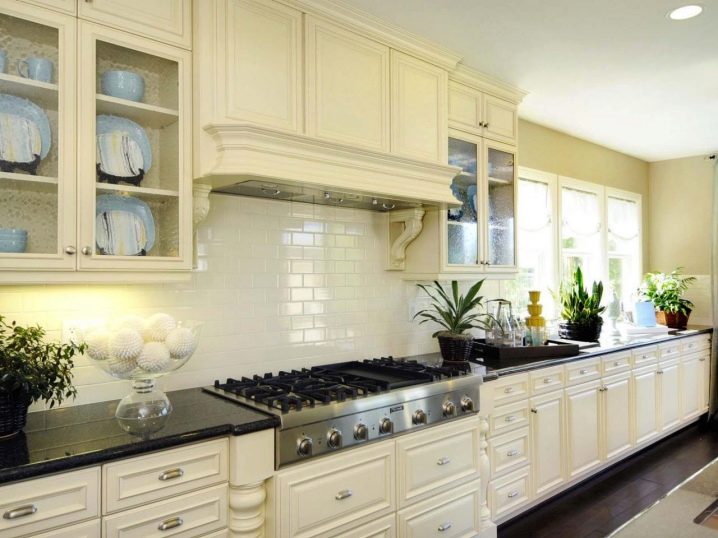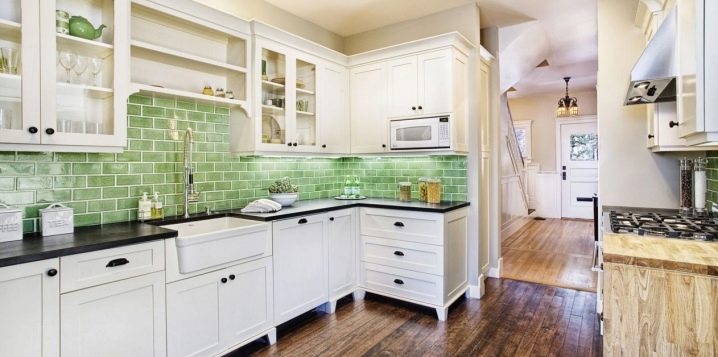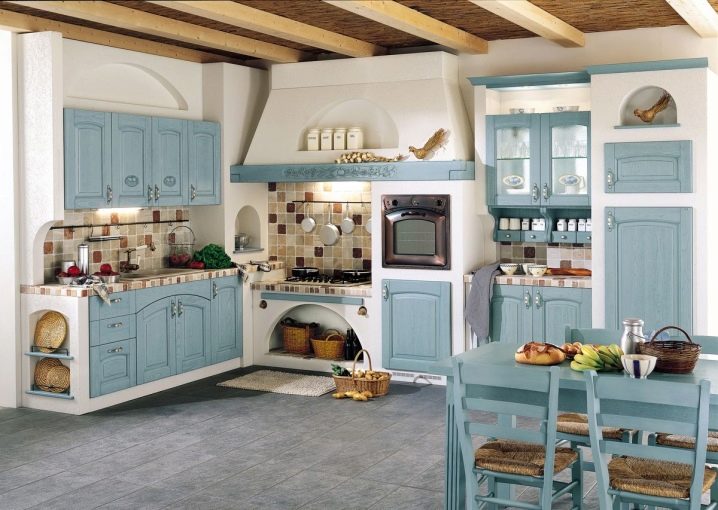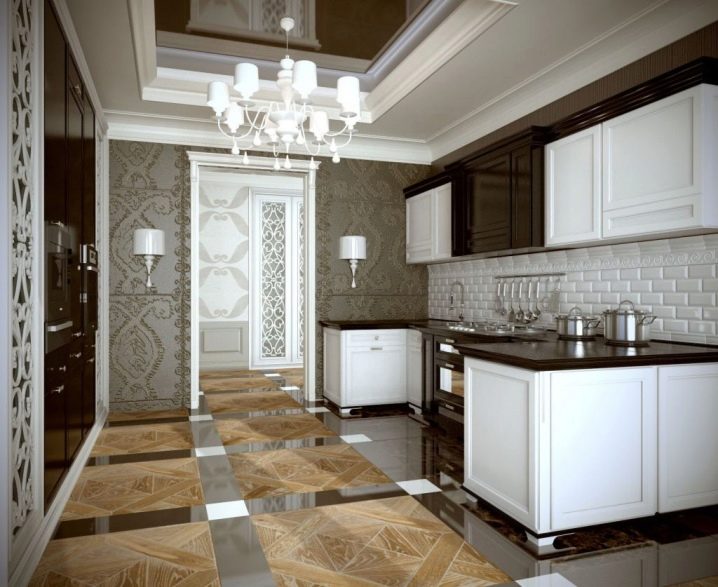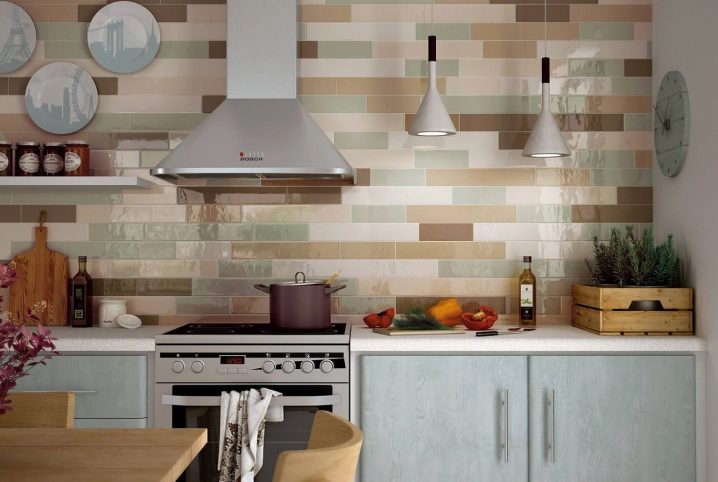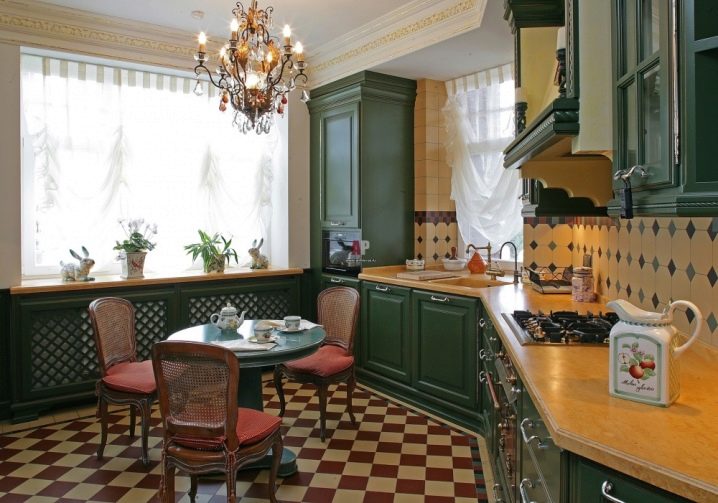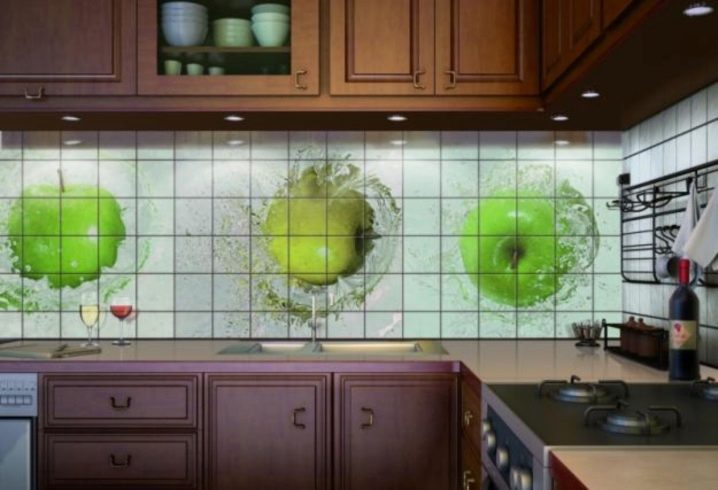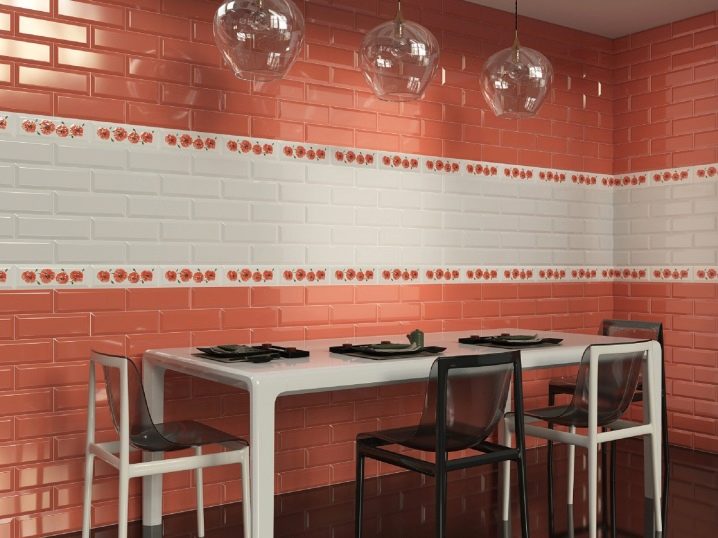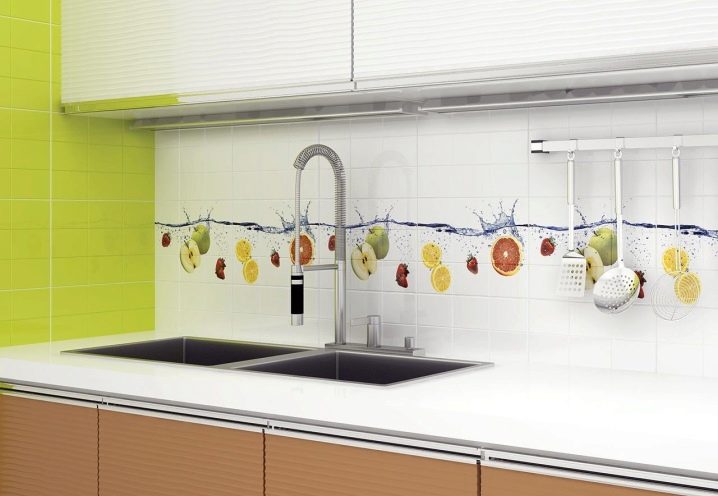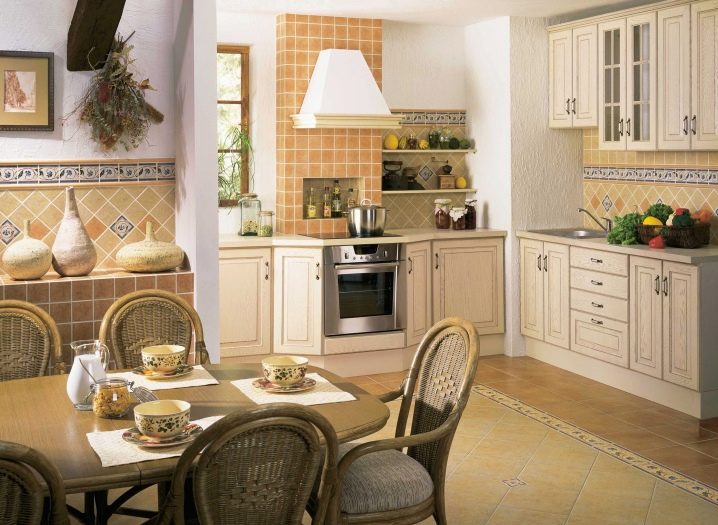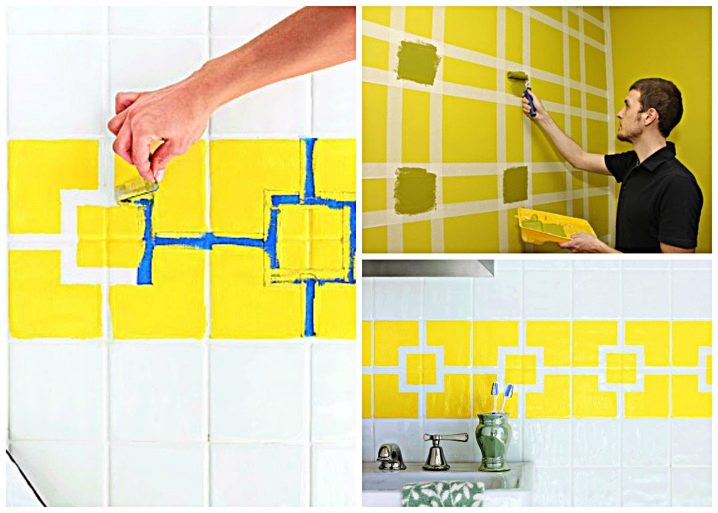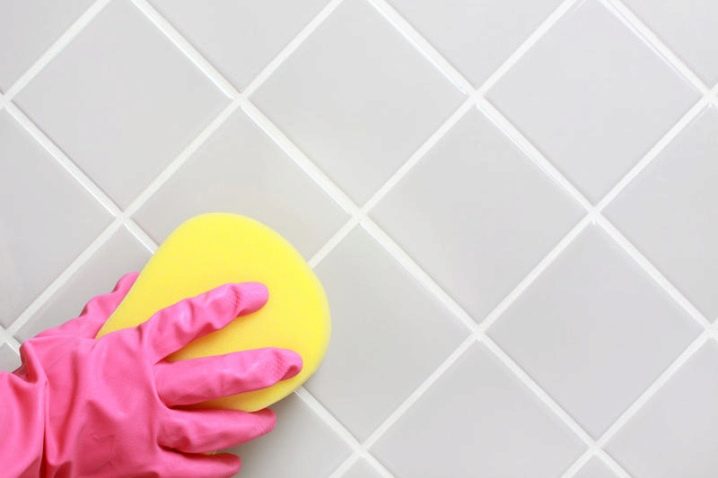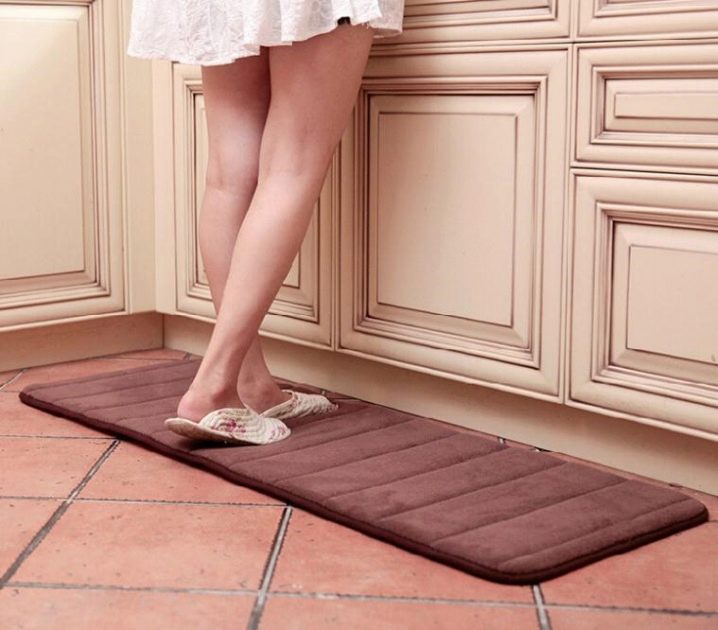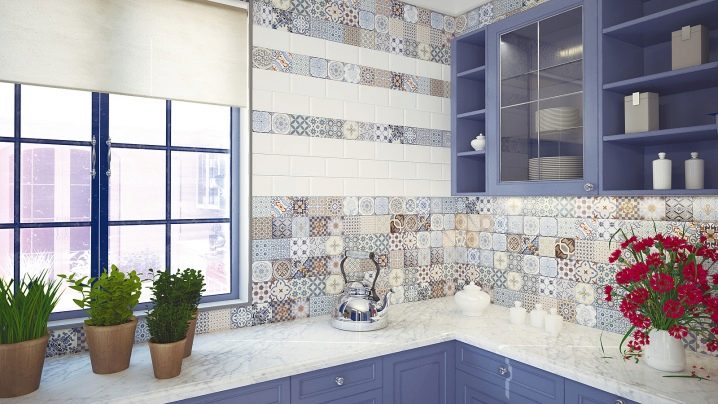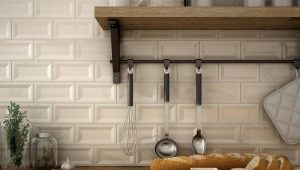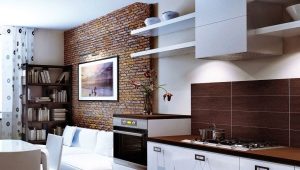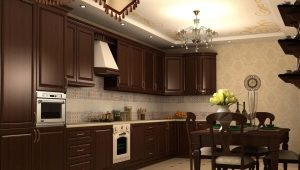Kitchen Tiles
Starting the arrangement of the kitchen room, due attention is paid to the walls and the floor. Different materials are used as cladding here, but tile is the most popular. Due to the wide range and high quality, it performs not only a decorative function, but also reliably protects wall and floor surfaces from adverse factors.
Advantages and disadvantages
When repairs begin, many are faced with the choice of how best to decorate kitchen surfaces, so that they harmoniously blend with furniture and other interior items. It is considered that the best finish for the kitchen is a tile. Its individual characteristics are the main priority in the selection process, so these features are given special attention. Kitchen tiles must be durable, reliable, practical and fully comply with GOST standards.
Modern manufacturers offer different copies of these products, both wall-mounted and floor-standing options. The laying process is performed on the entire wall or only where the work area is located. The important advantages of kitchen tiles include:
- durability;
- practicality;
- wear resistance;
- strength;
- fire resistance;
- resistance to chemistry and ultraviolet radiation;
- wide range of;
- affordable cost.
The disadvantages of this material are:
- cold surface;
- installation complexity;
- poor sound insulation;
- high surface requirements.
Laying begins with a thorough preparation of the walls, which should be as smooth as possible so that the tile has a presentable appearance. This tile is perfectly combined with drywall and with the right approach looks like a single composition. Immediately after laying should be grouting, which requires care.
If the tile is to be put under the headset, then it is necessary to take into account every detail so that they fully complement each other. After all, professional styling can bring a touch of sophistication and originality to the kitchen room, and also make it a favorite place to hang out.
Types of tiles
The tile is made from a mixture of sand, clay and additional mineral components that are to be treated with fire, after which they are covered with a layer of glaze. It is small and more voluminous, which allows us to easily choose the right option. Ceramic tile is the most durable, so the demand for it increases annually. Such a facing surface looks original and very attractive. The tile can be opaque, glossy and with a dusting.
This material is perfectly combined with glass and plastic surfaces. There are models under a stone, under a tree, mirror, convex and with an ornament. The plaster tile for kitchen which is characterized by rather low price and at the same time possesses excellent functionality is not less demanded. It can be small in size or volume.
The range consists of such tile options as:
- ceramic granite;
- clinker;
- gypsum;
- stone;
- mosaic;
- majolica.
The highest strength indicators of ceramic tile, which is resistant to moisture and is ideal for the kitchen.The clinker tile is very similar to the first type and is often laid on the floor, thanks to the non-slip surface. Gypsum mainly performs a decorative function, as well as majolica and mosaic. Very stylish looks stone tile, which is well complements the rest of the kitchen interior.
The collections of the Damascus and Tuscany mix are very popular. They are made in different colors and textures, as well as they are of impeccable quality and durability. This high-tech tile perfectly retains its original appearance for many years, decorating the kitchen and filling it with a positive atmosphere. There are models for walls and floors, due to which you can create unique compositions in kitchens.
Choice: what to look for
Such a finishing material, such as tile, must be chosen so correctly that it fully corresponds to the functions assigned to it. That is why, to the wall and floor products are different requirements, which must be taken into account in the selection process. But regardless of the purpose of the tile, experts recommend carefully studying the technical features, information on the packaging, as well as the availability of a certificate of quality.All of these factors are equally important when buying a tile.
By type of manufacturing distinguished extruded and extruded ceramics. It can be glazed or unglazed coating. To make the most correct choice, you must observe the following rules:
- carefully check the strength and integrity of the material;
- do the calculation with a margin of about 15%;
- for walls to choose models with an ideal surface, and on the floor it is better to buy more rough;
- moisture resistance level must be at least 0.03%;
- the cost depends on the size of the products, the smaller the tile size, the more expensive the price.
When selecting a tile, safety criteria are also quite important, such as:
- wear resistance class;
- degree of hardness;
- friction coefficient.
There are 5 classes of wear resistance, of which the best solution for the kitchen are products of the 3rd and 4th classes. Regarding hardness, a tile with a seventh grade is best. For the floor covering perfect fit instances with a friction coefficient not lower than 0.75%. Given all these features, you can lay out the original carpet of tiles, suitable to the overall design.The most common sizes are compact models of 20x20, and of the larger 20x50 and 20x60.
Tips for choosing patterns and colors on the floor
A huge variety of tiles makes it possible to embody the most extraordinary ideas and create a unique interior in the kitchen. Basically, the choice of this finishing material is based on the general stylistic design and consists of various kinds of nuances.
Professional designers advise:
- use a large tile of light tones in order to visually expand the space;
- not to use at the same time more than three different colors in order not to disturb the harmony of the kitchen interior;
- take into account the degree of future contamination of products, on the basis of which, make a choice of color.
The most practical and suitable for the kitchen are gray, beige and brown shades. They are resistant to pollution and, at the same time, significantly expand the area, which serves as a favorable factor for small kitchens. The size of the tiles is also important in many respects, because large squares fill the kitchen with open space, and rectangular products lengthen it. The floor tile lined with rhombus or another simple pattern looks beautiful. It can be monophonic or decorated with decorative drawings.
Apron design: characteristics and design
The working area in the kitchen is often decorated with a so-called tiled apron. It reliably protects walls from adverse factors of influence and is a beautiful decoration of the kitchen room. This part can be bright, unusual, design or any other format.
Well, if the texture of the tile on the apron is characterized by minimal porosity, it will make it easy to clean it from all sorts of dirt. Facing above the working surface must be thermally resistant and able to withstand heat up to 120 degrees.
In kitchens with a discreet design, it is recommended to use plain tile or glass instead of tile. In case of difficulties in the process of registration, the use of white tiles is allowed, since this color is universal and harmoniously fits into almost any setting. The original apron tile looks in contrast to the kitchen set. At the same time, it is not necessary to overload this zone with decorative inserts so that it has a presentable and stylish appearance.
Fashionable interior solutions
Recently, designers began to use in the process of kitchen design a variety of original styles and directions. The ideal option is the one that matches the style of the overall home improvement.
The following solutions are provided in the interior design:
Classic style. Perfect for white kitchen, as it allows the use of white, black and gray tones. It is appropriate to light or dark tiles with a discreet pattern or texture under a natural stone.
- High tech style. It is a fairly modern design direction, dominated by dark colors, so it is perfect for a dark kitchen, surprising the surrounding with luxury tiles with a pattern.
- Provence style. The Provence style kitchen is decorated with pastel shades, the color range of which can be beige, pink, white, mint and blue tiles.
- Art Deco style. Attracts attention with expensive tile samples, among which assortment there is matte, glossy, three-dimensional, rectangular, square, diamond-shaped, wide, narrow, with flowers, with fruit, as well as the author's 3D tile.
- Country style. It looks like a rustic kitchen, although it uses a lot of modern materials. Collections of ceramics of this direction represent imitation for natural finishing materials. It can be applied designer print or images of coffee, daisies and other relevant elements on the subject.
- Scandinavian style. It is characterized by a large amount of light, so the wall and floor tiles are suitable for bright colors. Very practical and beautiful in the Scandinavian style looks like a tile under a tree, which creates a feeling of comfort and coziness.
- English style. The English-style kitchen is distinguished by sophistication, excellent lighting and high-quality finishing in the form of elegant tiles of natural colors, among which beige, green, brown and white are in great demand. In some cases, mother-of-pearl ceramics suitable for the interior color can be used.
Modern trends allow the use of a special screen instead of a tile. This feature is characterized by functionality and practicality, so the quality is not much inferior to ceramic coatings.
If you pay attention to the rating of manufacturers, then such brands as Metro and Surrey occupy high positions in the world market. Their products fully comply with the norms and quality standards, which makes them in demand in different parts of the world.
The tile keeps within entirely or breaks into segments from which original compositions are laid out further. Patterns can be very different, starting with familiar images of fruits and ending with complex landscapes. Where appropriate, ceramics are decorated with baseboards and curbs that look very stylish. With the right lighting, such unique design solutions look especially beautiful.
Care rules
For the tiles in the kitchen for many years not to lose their original qualities, it needs the right care. For this you need to know some rules:
- Do not apply metal brushes or other abrasive materials to glossy ceramics;
- do not abuse aggressive detergents so as not to damage the seams;
- to eliminate greasy plaque use a solution of water with vinegar;
- to add shine, it is worth adding some liquid ammonia to the water for washing.
Facing in the form of kitchen tiles can always be updated with your own hands, giving it a novelty and presentable. In order to achieve the desired result, you can paint the tile with a paint of a suitable color. At the same time, the paint should be resistant to grease, dust and soot. The seams treated with epoxy materials do not collapse much longer. Painting tiled walls can refresh the kitchen and give the old tile a new life.
Starting to clean the tiled surfaces, it is recommended to use detergents specially designed for them. They carefully take care of the tiles, easily remove dirt from its surface, and also prevent the appearance of dullness and brightness on the lining. Their composition includes components that actively eliminate unpleasant odors, protect plumbing from the occurrence of mineral deposits and microorganisms.
Thanks to high-tech fixtures, kitchen tiles from modern manufacturers are surprising for their incomparable strength, elegant design and durability,making it the most popular finishing material in the kitchen.
Many housewives prefer to use wax for glitter. He not only takes care of the tile, but also creates a protective layer on its surface, thereby prolonging the life of the material. Regarding the floor tile models, it is worth caring for them more carefully. To do this, you need to lay a shoe carpet at the entrance, which will protect it from unwanted scratches and chips.
Numerous reviews indicate that the tile has the highest practicality and durability in relation to other finishing materials. Particular emphasis is placed on its decorative function, because each collection is a real work of art, which is striking in its versatility, a huge choice and stylish design ideas. Such features are the main priorities when choosing finishes for the kitchen.
